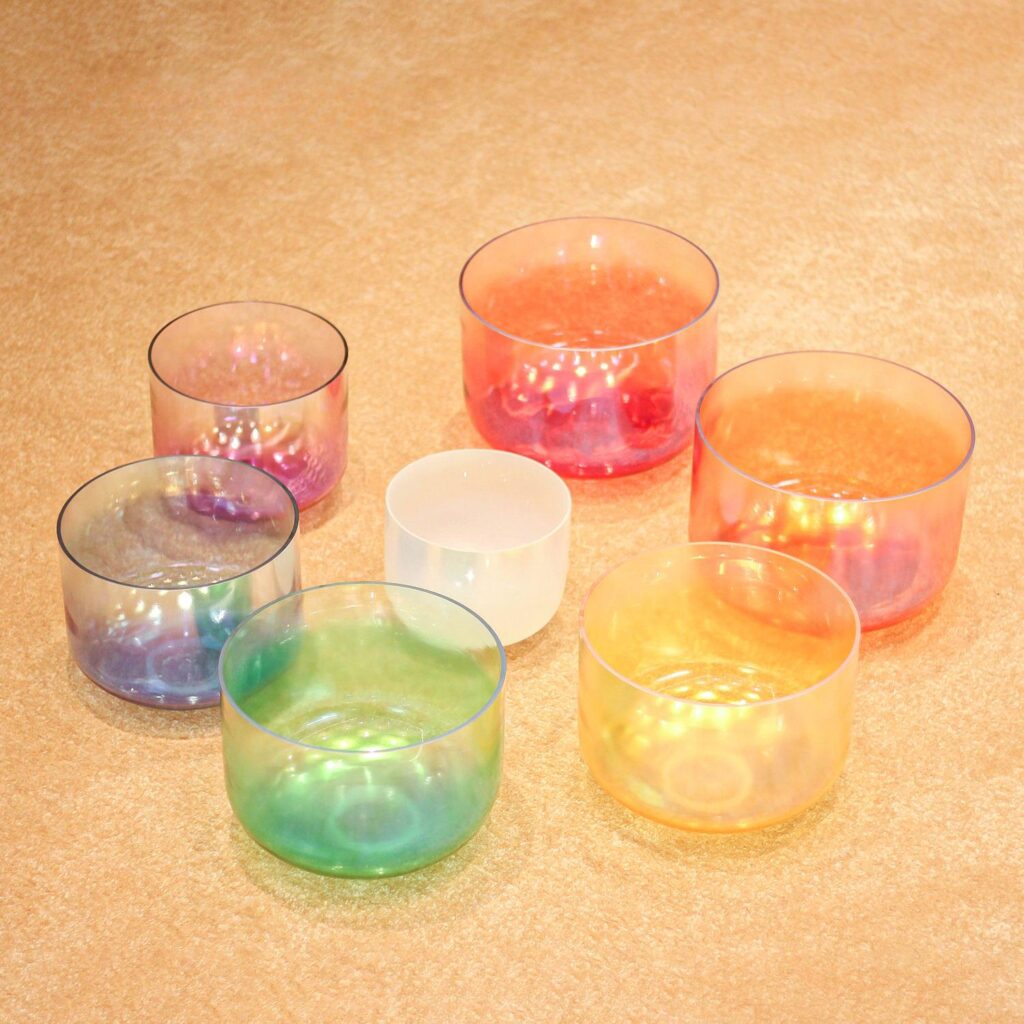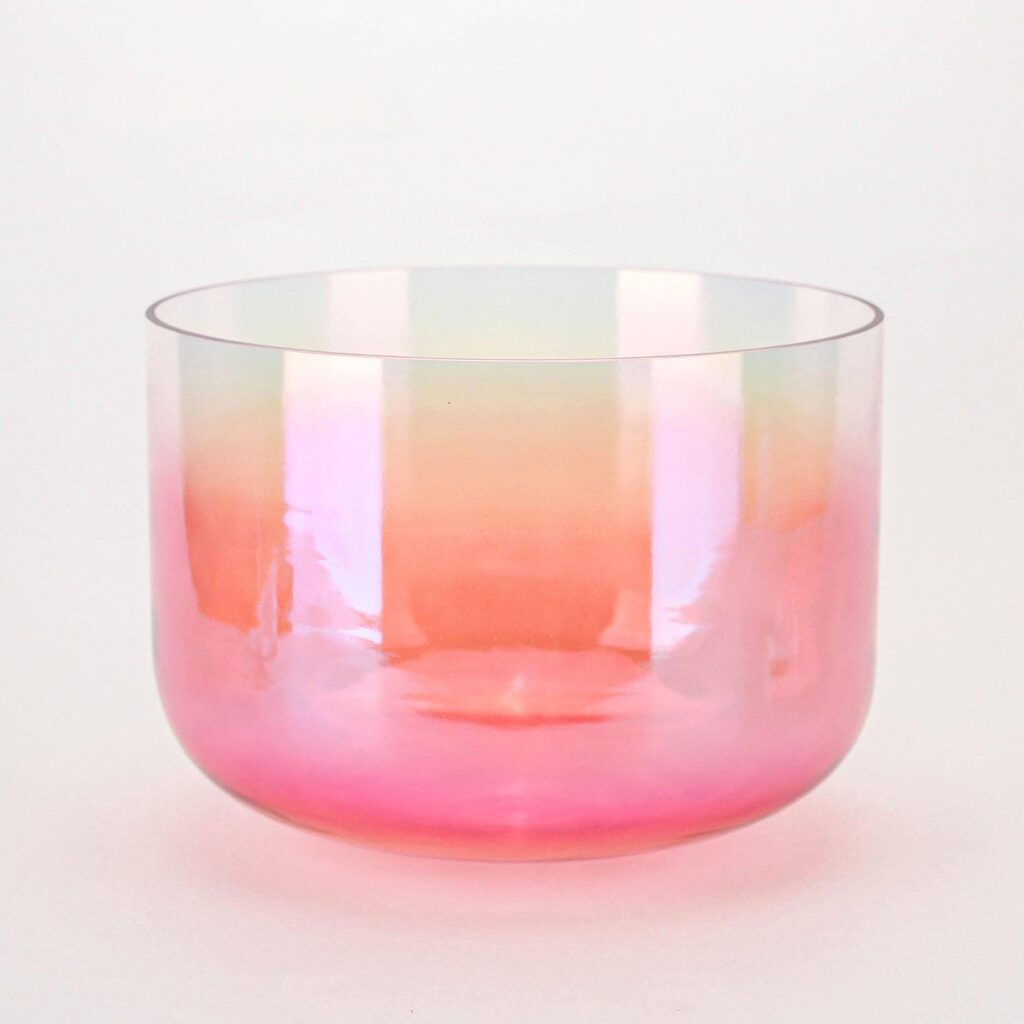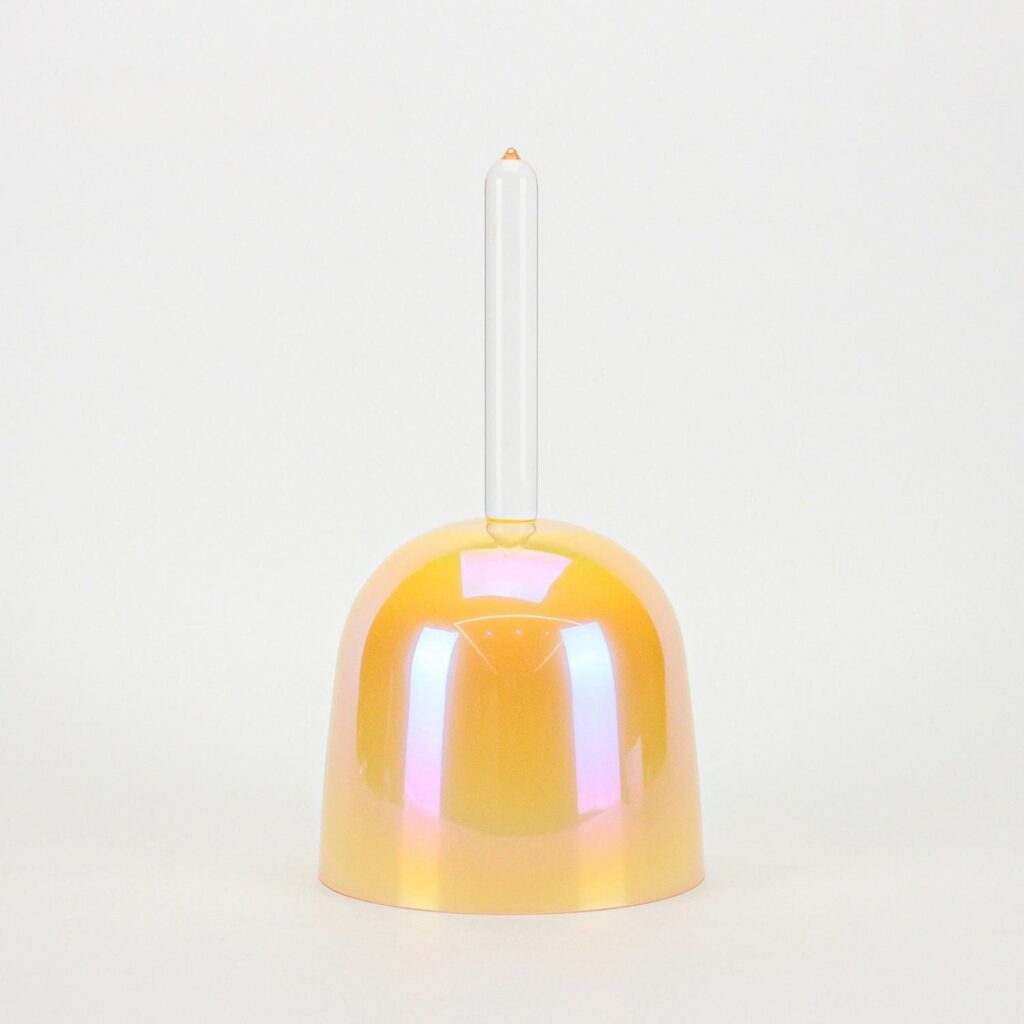Crystal singing bowls have emerged as powerful instruments for meditation, sound healing, and spiritual practice, combining ancient wisdom with modern crystal technology to create transformative acoustic experiences. These remarkable instruments, crafted from pure quartz crystal, produce ethereal tones that resonate deeply with both body and spirit, making them increasingly popular among meditation practitioners, sound therapists, musicians, and spiritual seekers worldwide.
The selection of an appropriate crystal singing bowl represents a significant decision that affects both immediate experience and long-term satisfaction with sound healing practice. Unlike traditional instruments where personal preference alone might guide selection, crystal singing bowls require consideration of multiple factors including acoustic properties, intended applications, physical characteristics, and individual energetic resonance that collectively determine optimal instrument choice.
Modern crystal singing bowl manufacturing has evolved to offer diverse options serving different needs, from traditional clear and frosted bowls to innovative alchemy creations infused with gemstones and precious metals. Understanding these variations, along with their unique acoustic signatures and therapeutic applications, enables informed selection that maximizes both functional effectiveness and personal satisfaction while supporting authentic spiritual and healing practice.
This comprehensive guide explores every aspect of crystal singing bowl selection, providing practical knowledge and systematic approaches that empower buyers to make confident decisions aligned with their specific needs, preferences, and spiritual goals while avoiding common pitfalls that can compromise satisfaction and investment value.

Crystal Singing Bowl Fundamentals
Crystal Composition and Manufacturing
Crystal singing bowls are primarily manufactured from pure quartz crystal, specifically silica dioxide (SiO2), chosen for its exceptional acoustic properties and energetic characteristics that create the clear, penetrating tones characteristic of these instruments. The purity level of quartz significantly affects both sound quality and energetic properties, with higher purity grades producing clearer tones and more stable frequencies that serve professional and therapeutic applications.
The manufacturing process begins with high-grade silica sand or crushed quartz that undergoes intense heating to approximately 4000°F (2200°C), transforming the material into molten quartz that can be shaped using specialized molds or spinning techniques. Different manufacturing approaches create distinct acoustic characteristics, with some methods producing uniform thickness while others create intentional variations that affect harmonic content and tonal complexity.
Quality grades in crystal singing bowl manufacturing typically range from commercial-grade instruments suitable for casual use to premium therapeutic-grade bowls that meet exacting standards for professional sound healing applications. Therapeutic-grade bowls undergo additional quality control measures including frequency verification, harmonic analysis, and structural integrity testing that ensures consistent performance and longevity appropriate for intensive professional use.
The relationship between crystal purity and acoustic performance involves both physical and energetic considerations, with higher purity materials generally producing clearer fundamental tones while lower impurity levels enable more stable frequency output and enhanced sustain characteristics. Professional-grade bowls typically utilize 99.9% pure quartz crystal that provides optimal acoustic performance while maintaining the structural integrity necessary for regular professional use.
Acoustic Principles and Sound Production
Crystal singing bowls produce sound through vibrational resonance activated by striking or rim-playing techniques that set the crystalline structure into oscillation at specific frequencies determined by bowl size, thickness, and crystal composition. The acoustic behavior follows established physical laws where larger bowls produce lower fundamental frequencies while smaller bowls generate higher pitches, creating predictable relationships that enable systematic bowl selection for specific tonal requirements.
The unique acoustic signature of crystal singing bowls includes exceptional purity of tone with minimal harmonic distortion, extended sustain duration that can exceed several minutes, and penetrating projection that enables effective use in both intimate and large-space applications. These characteristics result from the crystalline structure’s ability to maintain coherent vibration patterns while the material’s density and elasticity create optimal conditions for sustained resonance.
Harmonic content in crystal singing bowls typically emphasizes fundamental frequency purity while generating subtle overtones that create complexity without muddiness or acoustic confusion. This harmonic structure supports both musical applications requiring clear pitch definition and therapeutic uses where pure tones facilitate specific physiological and psychological responses associated with different frequencies and their healing properties.
The relationship between bowl size and fundamental frequency enables predictable selection for specific pitch requirements, with typical relationships showing that doubling bowl diameter generally lowers pitch by approximately one octave. Understanding these relationships allows systematic selection of multiple bowls that create harmonious combinations serving musical, therapeutic, and spiritual applications requiring specific frequency relationships.
Crystal Bowl Type Classifications

Frosted singing bowls represent the traditional and most widely used type of crystal singing bowl, manufactured through a specific process that creates their distinctive matte finish while optimizing acoustic performance for professional and therapeutic applications. The frosting process involves controlled cooling that creates microscopic surface textures enhancing grip for rim-playing techniques while producing the deep, resonant tones and rich vibrations characteristic of these instruments.
The acoustic signature of frosted bowls emphasizes fundamental frequency strength with warm, enveloping tones that create immersive sound environments ideal for meditation, sound baths, and therapeutic applications requiring sustained, penetrating acoustic presence. Their surface texture enables easier rim-playing techniques while the manufacturing process typically creates thicker walls that contribute to extended sustain duration and powerful acoustic projection.
Size ranges for frosted bowls typically span from 7 inches to 20 inches in diameter, with larger sizes producing increasingly deep, powerful tones that serve group applications and large-space events. While oversized frosted bowls exceeding 20 inches exist for specialized industrial applications, they present practical challenges including tuning difficulties and transportation limitations that make them less suitable for regular therapeutic or musical use.
The versatility of frosted crystal singing bowls makes them excellent choices for beginners and professionals alike, offering forgiving playing characteristics while providing the acoustic power and tonal quality necessary for serious sound healing practice. Their robust construction and reliable acoustic performance establish them as foundational instruments in most crystal singing bowl collections.

Clear crystal singing bowls feature smooth, transparent surfaces created through manufacturing processes that emphasize visual clarity and acoustic brightness, producing crystalline tones with enhanced harmonic content and sparkling acoustic characteristics. The clear finish results from specific cooling and polishing techniques that create perfectly smooth surfaces while maintaining optimal wall thickness for acoustic performance.
The sound signature of clear crystal bowls emphasizes brightness and clarity with enhanced high-frequency content that creates penetrating, ethereal tones particularly effective for focus enhancement, mental clarity work, and applications requiring acoustic precision and definition. Their lighter construction compared to similarly-sized frosted bowls contributes to their characteristically bright, bell-like tones that complement rather than overpower other instruments in ensemble settings.
Size availability for clear crystal bowls typically ranges from 6 inches to 12 inches in diameter, with the manufacturing process favoring smaller sizes that optimize the acoustic characteristics and structural integrity that define clear bowl performance. The more delicate nature of clear bowls requires careful handling while their acoustic sensitivity enables subtle playing techniques that reward gentle, precise approaches.
Clear crystal singing bowls serve specialized applications including meditation practices requiring mental clarity and focus, therapeutic work addressing upper chakras and consciousness expansion, and musical applications where bright, defined tones complement other instruments while providing distinct acoustic contributions that enhance overall sonic complexity and spiritual resonance.

Handheld practitioners’ bowls represent specialized crystal singing bowls designed for portability and intimate therapeutic applications, typically ranging from 5 to 8 inches in diameter while optimized for single-hand operation during healing sessions and personal practice. These compact instruments combine acoustic effectiveness with practical convenience, enabling practitioners to deliver focused sound therapy while maintaining physical connection with clients or meditation spaces.
The acoustic characteristics of handheld bowls emphasize clarity and penetration while producing sufficient volume for close-proximity applications without overwhelming intimate spaces or sensitive individuals. Their smaller size creates higher fundamental frequencies that serve upper chakra work, mental clarity enhancement, and detail-oriented therapeutic applications requiring precise frequency application and controlled acoustic intensity.
Construction considerations for handheld bowls include weight optimization for extended holding comfort, wall thickness balancing durability with acoustic responsiveness, and rim design facilitating secure grip while enabling effective playing techniques. Professional practitioners often select multiple handheld bowls in different pitches to provide comprehensive therapeutic coverage while maintaining the mobility essential for hands-on healing work.
Applications for handheld practitioners’ bowls include individual therapy sessions, mobile healing practices, travel meditation support, and intimate group work where larger bowls might prove overwhelming or impractical. Their convenience and effectiveness make them valuable additions to any crystal singing bowl collection while serving as primary instruments for practitioners specializing in personal, hands-on healing approaches.

Holy grail chalice bowls feature unique cup-like shapes that distinguish them from traditional bowl forms while creating distinctive acoustic properties and spiritual symbolism that appeals to practitioners working with sacred geometry and ceremonial applications. The chalice design alters acoustic resonance patterns while creating visual and energetic connections to traditional spiritual vessels and religious symbolism.
The acoustic behavior of chalice bowls differs significantly from traditional bowl shapes, producing rich harmonic content with complex overtone structures that create unique sonic signatures unavailable from conventional designs. Their form enables different playing techniques while generating acoustic complexity that serves group sound baths, ceremonial applications, and advanced therapeutic work requiring sophisticated harmonic environments.
Resonance characteristics of chalice bowls include enhanced harmonic interaction with other instruments, complex frequency relationships that create beating and interference patterns, and unique directional projection that focuses acoustic energy differently than traditional bowl shapes. These properties make them valuable for ensemble work and group applications where acoustic complexity and visual symbolism enhance the overall experience.
The aesthetic appeal of holy grail chalice bowls extends beyond their acoustic properties to include their symbolic significance and visual beauty that makes them popular among collectors and practitioners working with sacred geometry, ceremonial applications, and advanced spiritual practices where form and function combine to create meaningful ritual instruments.
Alchemy Crystal Singing Bowls
Alchemy bowls represent innovative crystal singing bowl designs that incorporate various gemstones, metals, and other materials during the manufacturing process to create unique vibrational qualities and enhanced healing properties associated with the added materials. The integration process fuses these elements with quartz crystal at the molecular level, creating instruments that combine crystal singing bowl acoustics with the energetic properties of precious stones and metals.
The manufacturing of alchemy bowls involves precise temperature control and timing that enables proper fusion of diverse materials while maintaining acoustic integrity and structural stability necessary for professional use. Common additions include precious metals like gold, silver, and platinum that enhance conductivity and create unique tonal characteristics, along with gemstones selected for their specific energetic properties and therapeutic associations.
Sound characteristics of alchemy bowls vary dramatically based on their specific material combinations, with each formulation creating unique acoustic signatures that serve different therapeutic applications and spiritual practices. Some combinations emphasize warmth and grounding while others enhance clarity and transcendence, enabling practitioners to select instruments that align with specific healing modalities and personal preferences.
The therapeutic applications of alchemy bowls extend traditional crystal singing bowl uses to include specialized work with specific energy systems, chakra balancing enhanced by gemstone properties, and advanced healing modalities that benefit from the combined effects of crystal acoustics and additional mineral energies. Their complexity and specialized nature typically appeal to experienced practitioners seeking instruments that serve sophisticated therapeutic and spiritual applications.
Gemstone Infusion Singing Bowls
Gemstone infusion singing bowls incorporate natural stones and crystals into their quartz crystal matrix, creating instruments that combine traditional crystal singing bowl acoustics with the energetic properties and healing associations of specific gemstones. The infusion process involves careful selection and integration of compatible materials that enhance rather than compromise acoustic performance while adding therapeutic dimensions to the instrument’s capabilities.
Popular gemstone additions include amethyst for spiritual awakening and intuition enhancement, rose quartz for heart healing and emotional balance, citrine for manifestation and personal power, and various other stones selected for their traditional healing properties and energetic compatibility with crystal singing bowl applications. Each combination creates unique acoustic and energetic signatures that serve different aspects of holistic healing and spiritual development.
The acoustic impact of gemstone infusion varies depending on the specific stones used and their integration levels, with some combinations enhancing sustain and harmonic richness while others emphasize clarity and frequency precision. Understanding these acoustic effects enables informed selection of gemstone infusion bowls that serve specific therapeutic goals while maintaining the acoustic excellence necessary for effective sound healing practice.
Applications for gemstone infusion bowls include specialized therapeutic work targeting specific healing goals, advanced meditation practices seeking enhanced energetic support, and holistic healing modalities that integrate crystal acoustics with gemstone therapy. Their specialized nature and enhanced properties typically command premium pricing while offering unique capabilities that serve advanced practitioners and dedicated spiritual seekers.
Selection Criteria and Evaluation Methods
Acoustic Quality Assessment
Evaluating the acoustic quality of crystal singing bowls requires systematic attention to multiple sound characteristics that collectively determine instrument suitability for specific applications and personal preferences. Professional assessment begins with fundamental frequency accuracy, ensuring that the bowl produces the intended pitch within acceptable tolerance ranges while maintaining frequency stability throughout its sustain duration.
Tone purity represents a crucial quality factor, with superior crystal singing bowls producing clear, clean fundamental tones free from unwanted noise, distortion, or competing frequencies that could interfere with therapeutic or musical applications. Quality assessment involves listening for harsh overtones, metallic artifacts, or acoustic irregularities that indicate manufacturing defects or inferior materials that compromise instrument effectiveness.
Sustain duration evaluation measures the bowl’s ability to maintain acoustic presence over extended periods, with quality instruments typically sustaining clear, audible tones for 45 seconds to several minutes depending on size and construction. Extended sustain duration enhances therapeutic effectiveness while indicating superior crystal quality and manufacturing precision that justify premium pricing and professional applications.
Volume and projection capabilities determine the bowl’s effectiveness in different spaces and applications, with quality instruments providing sufficient acoustic power for intended uses while maintaining tonal clarity and harmonic balance across their dynamic range. Testing should include both gentle activation for intimate applications and stronger playing for group or large-space use to ensure versatile performance capabilities.
Harmonic complexity assessment involves analyzing the overtone structure for musical richness without harshness or dissonance that could interfere with meditation or healing applications. Superior crystal singing bowls produce harmonious overtones that enhance rather than compete with the fundamental frequency while creating acoustic depth and interest that supports extended listening and therapeutic effectiveness.
Physical Quality Inspection
Physical quality evaluation begins with comprehensive visual inspection examining the bowl’s surface for cracks, chips, or manufacturing defects that could affect both acoustic performance and structural integrity. Even minor surface imperfections can propagate over time while affecting sound quality, making thorough visual assessment essential for identifying potential problems before purchase.
Crystal clarity assessment involves examining the material for bubbles, inclusions, or opacity variations that indicate inferior crystal quality or manufacturing inconsistencies. While minor variations may not significantly affect acoustic performance, extensive inclusions or opacity issues can indicate lower-grade materials that compromise both sound quality and long-term durability.
Wall thickness evaluation requires checking for uniform thickness distribution around the bowl’s circumference and depth, as significant variations can create acoustic irregularities and weak points that affect both sound quality and structural reliability. Professional-grade bowls maintain consistent wall thickness within narrow tolerances that optimize acoustic performance while ensuring structural integrity.
Edge and rim condition examination focuses on the playing surface where mallets and strikers make contact, checking for chips, roughness, or irregularities that could affect playing technique or create unwanted noise during performance. The rim area receives the most stress during use, making its condition crucial for long-term performance and playing satisfaction.
Structural integrity assessment includes checking the bowl’s stability and balance when placed on flat surfaces, ensuring proper weight distribution and absence of warping or distortion that could affect both acoustic performance and practical usability. Quality bowls maintain precise circular form and balanced weight distribution that supports optimal acoustic behavior and convenient handling.
Functional Performance Testing
Response sensitivity testing evaluates how effectively the bowl responds to different playing techniques and force levels, with quality instruments demonstrating predictable acoustic response across their dynamic range while maintaining tonal clarity from gentle touches to stronger strikes. Responsive instruments enable nuanced expression while providing reliable performance under various playing conditions.
Rim-playing assessment involves testing the bowl’s response to friction-based activation using rubber mallets or strikers, evaluating how easily sustained tones can be initiated and maintained through rim contact. This technique represents a fundamental crystal singing bowl playing method, making effective rim-playing capability essential for most applications and therapeutic practices.
Multiple activation testing involves striking or playing the bowl repeatedly to assess consistency of acoustic response and identify any variations or degradation that might indicate manufacturing issues or structural problems. Quality instruments maintain consistent acoustic behavior through extended use while demonstrating the reliability necessary for professional and therapeutic applications.
Environmental response evaluation examines how the bowl’s acoustic behavior changes under different temperature and humidity conditions, ensuring stable performance across normal environmental ranges. Professional-grade crystal singing bowls maintain acoustic consistency under varying conditions while demonstrating the stability necessary for reliable professional use.
Compatibility testing with other instruments involves assessing how the bowl’s acoustic output interacts with other crystal singing bowls or therapeutic instruments, checking for pleasant harmonic relationships and absence of harsh acoustic conflicts that could interfere with ensemble or multi-instrument applications.
Size Selection Guide
Small Crystal Singing Bowls (6-8 inches)
Small crystal singing bowls produce bright, penetrating tones with fundamental frequencies typically ranging from middle C to high C and above, creating acoustic characteristics that excel in applications requiring clarity, focus, and precise frequency delivery. Their higher pitch range serves upper chakra work, mental clarity enhancement, and meditation practices requiring crystalline acoustic presence without overwhelming volume or bass content.
The acoustic signature of small crystal singing bowls emphasizes clarity and definition with quick attack characteristics and controlled sustain duration that enables precise therapeutic application and detailed sound work. Their responsive nature allows subtle playing techniques while their size enables close-proximity use without overwhelming sensitive individuals or intimate spaces requiring gentle acoustic approaches.
Portability advantages make small crystal singing bowls ideal for travel, mobile therapeutic practices, and situations requiring frequent instrument transportation while their lower cost compared to larger bowls enables affordable access to crystal singing bowl benefits for budget-conscious practitioners and beginners exploring sound healing applications.
Applications particularly suited to small crystal singing bowls include personal meditation practice, individual therapy sessions, travel meditation support, and upper chakra balancing work where higher frequencies serve specific therapeutic goals. Their versatility and accessibility make them excellent starting instruments while their specialized acoustic characteristics serve ongoing needs in comprehensive crystal singing bowl collections.
User considerations for small crystal singing bowls include their limited volume output for large spaces or group applications, higher pitch ranges that may not suit all therapeutic needs, and reduced sustain duration compared to larger instruments. However, their advantages in portability, affordability, and specialized acoustic characteristics often outweigh these limitations for appropriate applications and user preferences.
Medium Crystal Singing Bowls (8-12 inches)
Medium crystal singing bowls represent the most versatile size category, producing balanced acoustic characteristics that combine sufficient volume for group applications with manageable size for individual use while offering fundamental frequencies in the middle register that serve diverse therapeutic and musical applications. Their acoustic balance makes them popular choices for both beginners and experienced practitioners seeking instruments that adapt to various contexts and needs.
The tonal characteristics of medium crystal singing bowls emphasize harmonic richness and complexity while maintaining clear fundamental frequency definition that serves both therapeutic precision and musical harmony requirements. Their balanced frequency response provides adequate bass content for grounding effects while retaining sufficient high-frequency clarity for mental focus and upper chakra work.
Volume and projection capabilities of medium bowls enable effective use in both intimate and moderately-sized group settings while their sustain duration typically provides extended acoustic presence suitable for meditation, therapy, and sound bath applications. This versatility makes them valuable foundation instruments that serve multiple roles within crystal singing bowl practices and collections.
Professional applications frequently favor medium crystal singing bowls for their reliable performance across diverse client needs and therapeutic modalities while their reasonable cost compared to larger bowls enables professional practitioners to acquire multiple instruments serving different therapeutic frequencies and musical relationships without excessive investment.
Space and storage considerations make medium crystal singing bowls practical for most home and professional environments while their weight and size remain manageable for regular transport and setup. Their balanced characteristics often make them optimal single-bowl choices for practitioners seeking maximum versatility from individual instrument investments.
Large Crystal Singing Bowls (12+ inches)
Large crystal singing bowls produce deep, powerful tones with extended sustain duration that creates immersive acoustic environments serving group sound baths, ceremonial applications, and therapeutic work requiring profound acoustic impact and extended frequency presence. Their low fundamental frequencies provide strong grounding effects while their acoustic power enables effective use in large spaces and group settings.
The acoustic characteristics of large crystal singing bowls include extended sustain duration often exceeding two minutes, powerful volume output that fills substantial spaces, and rich harmonic content that creates complex acoustic environments supporting deep meditation and transformative experiences. Their acoustic presence often becomes the dominant element in sound healing sessions while providing acoustic foundation for ensemble applications.
Investment considerations for large crystal singing bowls include significantly higher purchase costs, increased storage and transportation requirements, and specialized stands or supports necessary for proper display and playing access. Their size and weight typically require dedicated practice spaces while their acoustic power may overwhelm smaller environments or sensitive individuals requiring gentler approaches.
Professional applications for large crystal singing bowls include sound healing centers, retreat facilities, wellness spas, and therapeutic practices serving group clients or requiring powerful acoustic interventions for specific healing modalities. Their dramatic acoustic presence often serves as centerpiece instruments while their therapeutic capabilities justify investment for serious professional practices.
Practical limitations of large crystal singing bowls include space requirements for proper storage and display, transportation challenges for mobile practices, and acoustic considerations for residential or shared spaces where their power might disturb neighbors or family members. These factors require careful evaluation before investment in large instruments that demand appropriate environments for optimal utilization.
Note and Frequency Selection
Understanding Musical Notes and Frequencies
Read the guide
Crystal singing bowls are typically tuned to specific musical notes based on the Western chromatic scale, with each note corresponding to particular frequencies measured in Hertz (Hz) that create predictable acoustic relationships enabling harmonious combinations and therapeutic applications. Understanding these relationships enables informed selection of single bowls or bowl combinations that serve specific musical, therapeutic, or spiritual purposes.
The standard tuning reference for crystal singing bowls typically uses A=440 Hz as the foundation, with other notes calculated using equal temperament relationships that create consistent interval spacing throughout the chromatic scale. This standardization enables compatibility with other musical instruments while providing predictable frequency relationships that serve both musical and therapeutic applications requiring precise acoustic coordination.
Frequency precision in quality crystal singing bowls typically maintains accuracy within ±10 cents (one cent = 1/100 of a semitone), ensuring compatibility with other instruments and therapeutic applications requiring specific frequency delivery. Professional-grade bowls often exceed this accuracy while maintaining frequency stability throughout their operational lifetime under normal use conditions.
Octave relationships enable systematic bowl selection where larger bowls produce lower octaves of the same note names, creating harmonic compatibility while serving different therapeutic applications and acoustic requirements. Understanding octave relationships enables building bowl collections that maintain harmonic coherence while addressing diverse frequency needs and therapeutic goals.
Chakra System and Frequency Correspondence
Traditional chakra associations link specific musical notes and frequencies to the seven primary energy centers, providing systematic frameworks for crystal singing bowl selection serving energy balancing and spiritual development applications. While various traditions present different note assignments, common systems provide practical starting points for therapeutic and spiritual practice development.
The root chakra traditionally corresponds to C notes around 256 Hz, providing grounding and stability effects through deep, fundamental frequencies that resonate with basic survival and security needs. Crystal singing bowls in C typically serve foundation work in therapeutic sessions while providing acoustic grounding for both individual and group applications requiring stability and security enhancement.
Sacral chakra associations typically utilize D notes around 288 Hz, serving creativity, sexuality, and emotional flow through frequencies that stimulate creative expression and emotional balance. D note crystal singing bowls often serve therapeutic work addressing creative blocks, relationship issues, and emotional healing requiring gentle frequency support for sensitive areas.
Solar plexus chakra correspondences commonly use E notes around 324 Hz, supporting personal power, confidence, and digestive health through frequencies that energize and strengthen individual will and self-expression. E note bowls serve empowerment work and confidence building while addressing issues related to personal authority and self-worth.
Heart chakra applications traditionally employ F notes around 342 Hz, facilitating love, compassion, and emotional healing through frequencies that open and balance the heart center while promoting connection and understanding. F note crystal singing bowls frequently serve relationship healing, self-love work, and emotional release applications requiring gentle heart opening and healing support.
Throat chakra work typically utilizes G notes around 384 Hz, supporting communication, truth, and creative expression through frequencies that enhance vocal expression and authentic communication. G note bowls serve therapeutic applications addressing communication difficulties, creative expression blocks, and truth-telling challenges requiring throat chakra balancing and healing.
Third eye chakra applications commonly use A notes around 432 Hz or 440 Hz, enhancing intuition, psychic abilities, and spiritual insight through frequencies that stimulate higher perception and consciousness expansion. A note crystal singing bowls serve meditation enhancement, intuitive development, and spiritual awakening practices requiring third eye activation and development.
Crown chakra correspondences typically employ B notes around 480 Hz, facilitating spiritual connection, enlightenment, and cosmic consciousness through frequencies that open awareness to higher dimensions and universal connection. B note bowls serve advanced spiritual practices, meditation deepening, and consciousness expansion work requiring crown chakra activation and transcendence support.
Single Bowl vs. Multiple Bowl Considerations
Single bowl selection requires identifying the most versatile note that serves primary therapeutic goals while providing sufficient acoustic range for diverse applications and personal preferences. Single bowl choices often favor middle register notes like F, G, or A that provide balanced frequency content serving both grounding and uplifting effects while maintaining practical versatility for various applications.
The advantages of single bowl ownership include lower initial investment, simplified storage and transportation, reduced complexity in technique development, and focused practice that enables deep familiarity with one instrument’s capabilities and optimal applications. Single bowl practice often provides intensive learning experiences while building foundational skills transferable to expanded collections.
Multiple bowl configurations enable comprehensive frequency coverage serving diverse therapeutic needs while creating harmonic combinations that enhance acoustic complexity and therapeutic effectiveness. Systematic collection building typically begins with foundational notes followed by complementary additions that expand frequency range and harmonic possibilities without creating acoustic conflicts or redundant capabilities.
Harmonic compatibility considerations guide multiple bowl selection, ensuring that chosen frequencies create pleasant acoustic relationships when played simultaneously or sequentially. Common harmonic intervals including perfect fifths, major thirds, and octaves provide starting points for compatible combinations while avoiding dissonant relationships that could interfere with therapeutic or meditative applications.
Progressive collection expansion strategies begin with essential frequencies serving primary therapeutic goals while planning future additions that enhance rather than duplicate existing capabilities. Understanding personal preferences, therapeutic focus, and practical limitations enables systematic collection development that maximizes utility while managing investment and storage requirements effectively.
Different Uses and Application-Specific Selection
Personal Meditation and Spiritual Practice
Home meditation practice places specific demands on crystal singing bowl selection that balance acoustic effectiveness with practical considerations including space limitations, noise considerations, and personal aesthetic preferences that affect long-term satisfaction and regular use. Residential applications typically favor moderate-sized bowls that provide sufficient acoustic presence without overwhelming living spaces or disturbing neighbors and family members.
Individual spiritual development goals influence bowl selection through frequency preferences that support specific aspects of personal growth including grounding for stability, heart opening for emotional healing, or high-frequency activation for consciousness expansion. Understanding personal spiritual focus enables targeted bowl selection that enhances rather than distracts from established meditation and spiritual practices.
Daily practice integration requires crystal singing bowls that inspire regular use through acoustic beauty, ease of operation, and practical convenience that supports consistent spiritual practice without excessive setup or maintenance requirements. Bowls selected for daily use benefit from durability, reliable acoustic performance, and aesthetic appeal that maintains engagement and motivation for continued practice.
Sacred space creation utilizes crystal singing bowls as focal points for meditation areas while their acoustic presence defines and energizes spaces dedicated to spiritual practice. Bowl selection for sacred space applications often emphasizes visual beauty and energetic presence alongside acoustic qualities that create atmosphere supporting spiritual focus and contemplative states.
Personal resonance testing involves experiencing different bowls firsthand to identify instruments that create positive physical and emotional responses while supporting individual spiritual goals and aesthetic preferences. This subjective evaluation complements technical assessment while ensuring personal compatibility that enhances long-term satisfaction and spiritual development.
Professional Sound Healing Practice
Professional sound healing applications require crystal singing bowls that meet demanding performance standards while serving diverse client needs and therapeutic modalities with reliability, acoustic excellence, and professional appearance that builds client confidence and therapeutic credibility. Professional instrument selection balances acoustic performance with practical considerations including portability, durability, and investment cost that affect practice sustainability and effectiveness.
Client diversity in professional practice requires comprehensive bowl collections or carefully selected individual instruments that serve varying therapeutic needs, sensitivity levels, and healing goals across different client populations. Professional practitioners often require multiple bowls or highly versatile individual instruments that adapt to specific client requirements while maintaining therapeutic effectiveness and acoustic quality.
Treatment environment considerations include acoustic characteristics of therapy spaces, client capacity ranges, and noise restrictions that influence appropriate bowl sizes and acoustic output levels for professional applications. Understanding treatment space acoustics enables bowl selection that optimizes therapeutic effectiveness while respecting environmental constraints and client comfort requirements.
Professional credibility benefits from quality instruments that demonstrate practitioner commitment to excellence while providing reliable performance that supports therapeutic goals and client satisfaction. Investment in professional-grade crystal singing bowls often pays dividends through enhanced client trust, referral generation, and therapeutic effectiveness that justifies premium instrument costs.
Technique development for professional practice requires instruments that respond well to diverse playing methods while enabling subtle therapeutic applications and powerful group interventions as client needs dictate. Professional-grade bowls typically offer superior playing characteristics that reward advanced technique while providing reliable performance under intensive professional use conditions.
Music Performance and Recording
Musical performance applications require crystal singing bowls that integrate effectively with other instruments while providing reliable acoustic behavior and appropriate tonal characteristics that serve specific musical roles and artistic visions. Performance bowl selection often emphasizes acoustic projection, frequency accuracy, and harmonic compatibility that enable effective ensemble integration and artistic expression.
Recording applications place specialized demands on crystal singing bowl selection including acoustic characteristics that translate well through microphones and recording equipment while providing sufficient acoustic interest and clarity for professional audio production. Recording bowls often require exceptional acoustic quality and consistency that maintains effectiveness through technical processing and reproduction systems.
Ensemble integration requires crystal singing bowls that complement rather than compete with other instruments while providing distinct acoustic contributions that enhance overall musical effectiveness and artistic impact. Understanding acoustic relationships with other instruments enables informed bowl selection that optimizes musical collaboration while maintaining individual instrument identity and effectiveness.
Creative expression through crystal singing bowls benefits from instruments that inspire artistic exploration while providing sufficient acoustic versatility for diverse musical applications and experimental techniques. Artistic bowl selection often emphasizes unique acoustic characteristics and expressive potential that support individual creative vision while enabling ongoing artistic development and exploration.
Professional development in musical applications requires instruments that support technique advancement while providing acoustic capabilities that serve increasingly sophisticated musical applications and artistic challenges. Quality instruments often enable artistic growth while maintaining relevance throughout developing musical careers and expanding artistic capabilities.
Educational and Workshop Applications
Educational applications require crystal singing bowls that serve pedagogical goals while accommodating diverse student needs, varying skill levels, and institutional constraints including budget limitations and shared-use requirements. Educational bowl selection often emphasizes durability, acoustic effectiveness, and cost efficiency that serves teaching objectives while maintaining student engagement and learning effectiveness.
Workshop leadership applications require instruments that effectively serve group instruction while providing acoustic presence that reaches all participants and maintains attention throughout extended educational sessions. Workshop bowls often require sufficient acoustic power and clarity that enables effective demonstration while supporting group learning activities and participant engagement.
Student accessibility considerations influence educational bowl selection through factors including ease of playing, forgiving acoustic characteristics, and safety features that enable successful student experiences regardless of initial skill levels or physical capabilities. Educational instruments often emphasize user-friendly characteristics that support learning confidence while minimizing frustration or technical barriers.
Institutional durability requirements for educational applications include resistance to damage from inexperienced handling, consistent acoustic performance under intensive use, and longevity that justifies institutional investment while providing reliable service throughout extended educational programs. Educational bowls often require enhanced durability features that maintain effectiveness under demanding institutional use conditions.
Progressive skill development in educational contexts benefits from instruments that reward improving technique while providing sufficient acoustic sophistication that maintains student interest and engagement throughout advancing skill levels. Educational bowl selection often balances accessibility with growth potential that supports continued learning and development within institutional programs.
Conclusion and Selection Recommendations
Fundamental Selection Principles
Successful crystal singing bowl selection requires balancing multiple factors including acoustic quality, intended applications, personal preferences, and practical constraints that collectively determine optimal instrument choice for specific needs and circumstances. Understanding these interconnected considerations enables informed decisions that maximize both immediate satisfaction and long-term utility while avoiding common selection errors that compromise investment value and user experience.
Quality prioritization should guide crystal singing bowl selection through emphasis on acoustic excellence, structural integrity, and manufacturing precision that ensure reliable performance and lasting satisfaction regardless of specific applications or personal preferences. Superior quality instruments typically provide better value through enhanced performance, extended useful life, and greater user satisfaction that justifies initial investment premiums.
Application-specific selection enables optimal instrument choice through clear understanding of primary intended uses, performance requirements, and practical constraints that define appropriate instrument characteristics and capabilities. Focused application analysis prevents over-investment in unnecessary features while ensuring adequate capabilities for intended uses and future development needs.
Personal compatibility assessment involves subjective evaluation of acoustic preferences, energetic resonance, and aesthetic appeal that affects long-term satisfaction and regular use patterns. Understanding personal preferences and compatibility factors guides selection decisions that enhance rather than conflict with individual temperament, spiritual goals, and acoustic sensitivities.
Budget optimization strategies balance quality aspirations with financial realities while prioritizing features and capabilities that serve primary needs and provide lasting value. Effective budget planning enables appropriate quality levels while avoiding financial strain that could compromise satisfaction or limit future instrument acquisition and spiritual development opportunities.
Recommendations by User Category
Beginning practitioners benefit from medium-sized, traditional frosted crystal singing bowls in versatile frequencies like F, G, or A that provide balanced acoustic characteristics while remaining accessible for developing technique and spiritual practice. Initial selections should emphasize quality within budget constraints while providing growth potential that supports continued learning and practice development.
Professional sound healers require therapeutic-grade instruments with exceptional acoustic quality, reliable performance characteristics, and appropriate sizes for client work and treatment environments. Professional selections often favor comprehensive collections or highly versatile individual instruments that serve diverse client needs while maintaining the acoustic excellence and professional credibility necessary for successful practice.
Musicians and performers need crystal singing bowls that integrate effectively with their musical contexts while providing reliable acoustic behavior and appropriate tonal characteristics for specific artistic applications. Musical selections often emphasize acoustic projection, frequency accuracy, and harmonic compatibility that serve ensemble integration while supporting individual artistic expression and creative development.
Meditation practitioners benefit from bowls that support personal spiritual goals while fitting comfortably within living environments and practice spaces. Personal practice selections often favor instruments that inspire regular use through acoustic beauty and spiritual resonance while remaining practical for residential use and daily spiritual practice integration.
Educational institutions require durable, versatile instruments that serve teaching objectives while accommodating diverse student needs and institutional constraints. Educational selections often emphasize cost-effectiveness, user-friendly characteristics, and acoustic capabilities that support effective instruction while maintaining student engagement and learning effectiveness.
Collectors and enthusiasts may prioritize unique acoustic characteristics, artistic beauty, or specialized features that provide aesthetic satisfaction and acoustic distinction while building comprehensive collections that explore the full range of crystal singing bowl capabilities and cultural significance.
Future Development and Continuing Education
Crystal singing bowl mastery extends beyond initial instrument selection to encompass ongoing technique development, acoustic understanding, and spiritual growth that deepens appreciation and effectiveness while expanding applications and personal satisfaction. Continued learning enhances instrument utilization while building expertise that guides future selections and practice development.
Professional development opportunities including workshops, training programs, and mentorship relationships provide access to advanced knowledge while building skills and understanding that enhance both instrument selection and effective utilization. Professional education enables informed decisions while developing expertise that serves personal practice and potential professional applications.
Community engagement through crystal singing bowl groups, sound healing organizations, and spiritual communities provides ongoing support while offering opportunities for shared learning, instrument exploration, and technique development that enhances individual practice while contributing to broader community knowledge and cultural preservation.
Technology integration including acoustic analysis tools, recording equipment, and online learning resources enables enhanced understanding of instrument characteristics while supporting technique development and acoustic optimization that maximizes instrument potential and user satisfaction.
The journey of crystal singing bowl exploration continues throughout lifelong practice, with each instrument serving as both tool and teacher in ongoing spiritual development and acoustic discovery. Through mindful selection, dedicated practice, and continued learning, practitioners can develop relationships with these remarkable instruments that enrich both personal spiritual development and broader community contribution while preserving and advancing the traditions that keep this powerful healing art alive and accessible for future generations.
Crystal singing bowls offer profound opportunities for healing, spiritual growth, and acoustic beauty that reward thoughtful selection and dedicated practice with transformative experiences and lasting satisfaction. By understanding the principles and considerations outlined in this guide, practitioners can make informed choices that serve their unique needs while honoring the remarkable potential of these extraordinary instruments to facilitate healing, consciousness expansion, and spiritual awakening.








One Response